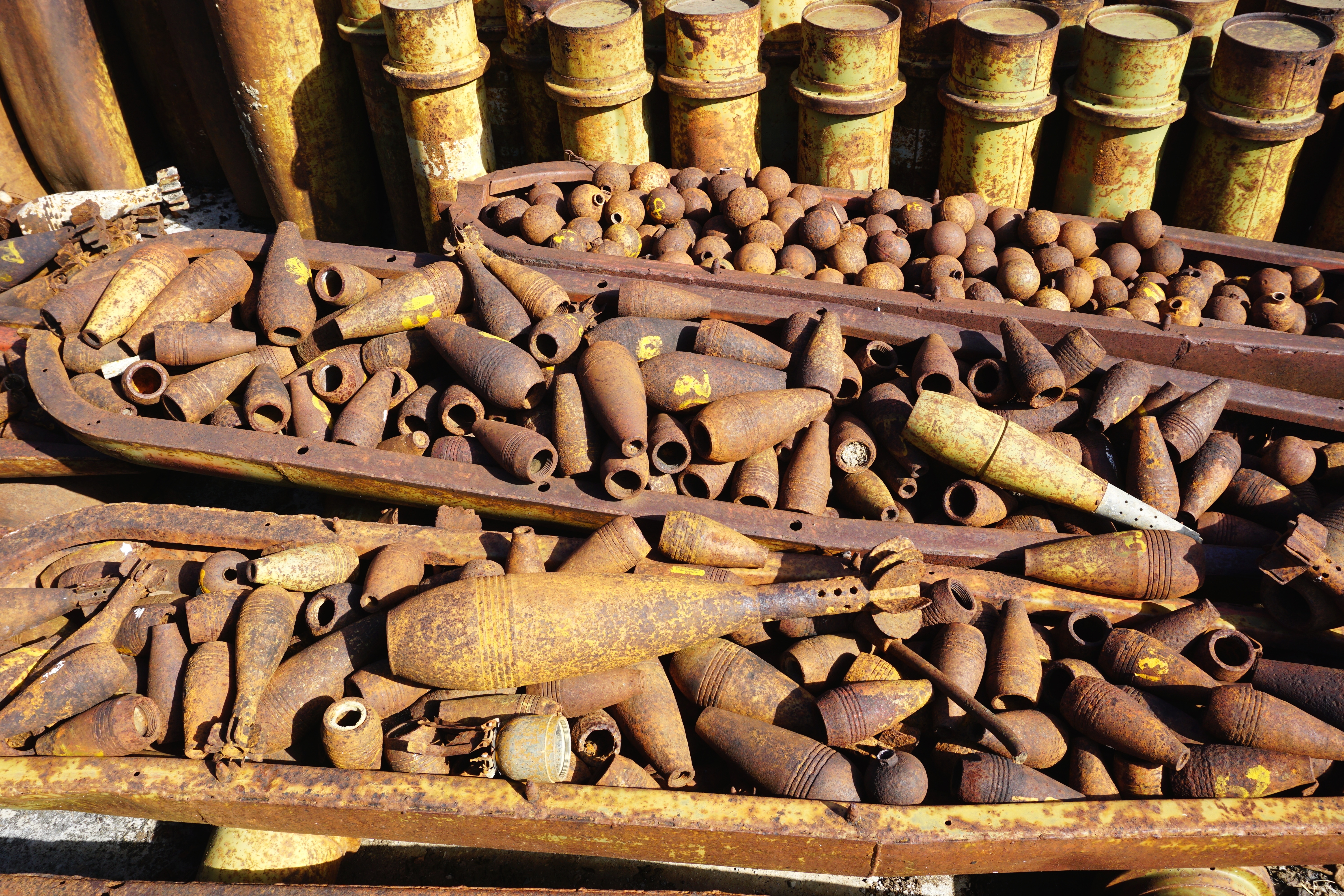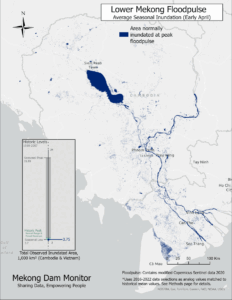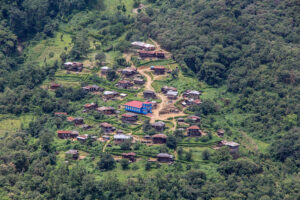Editor’s Note: This piece represents the consensus view of the War Legacies Working Group, a project of the Southeast Asia program.
Problem
The Vietnam War ended five decades ago. But munitions and chemicals deployed in that conflict continue to have deadly effects today. Residents of Vietnam, Laos, and Cambodia face daily hazards from unexploded ordnance (UXO). Exposure to the herbicide Agent Orange has impacted the health and well-being of multiple generations in each of these countries. UXO clearance and safety education and cleaning up the dioxin residue from Agent Orange are all crucial to stop future harm. It is equally vital to support the long-term care of individuals and families who have already been affected by UXO and Agent Orange.
Since 2007 Congress has appropriated $382 million for Agent Orange in Vietnam, approximately three-quarters of which has covered cleanup efforts and one-quarter of which has gone to disability assistance. So far, U.S. disabilities assistance has reached several tens of thousands of severely disabled Vietnamese under a bilateral agreement that terminates in 2024. The United States and Vietnam are two years into a plan to complete the cleanup of dioxin at the former American airbase at Bien Hoa by 2029.
Since 1993 the U.S. has provided $166 million in Vietnam to remove UXO, assist victims and educate people on how to deal with UXO they encounter. Over the same period the U.S. contributed $270 million in Laos for UXO clearance and over $167 million in Cambodia. These numbers have increased significantly since 2016, but these amounts are still insufficient. Under the Biden Administration, the United States has an opportunity to deepen its relationships with Vietnam, Laos, and Cambodia by expanding on these existing efforts to address war legacies.
Background/Context
Dealing with Agent Orange
In 1961 the U.S. military began spraying the herbicide Agent Orange and other herbicides in Vietnam, southeastern Laos, and parts of Cambodia in order to deny cover and food to opposition forces. Agent Orange was contaminated with dioxin, one of the most toxic chemicals known to science. By the time the spraying stopped in 1971 the U.S. had denuded more than 10,000 square miles, about 15 percent of the total land area of southern Vietnam or about the area of Massachusetts. Since 1991, scientists at the United States Institute of Medicine have shown dioxin to be a risk factor in a lengthening list of serious illnesses and birth defects. Estimates of Vietnamese victims of Agent Orange range from 2.8 to 4.1 million and tens of thousands of American soldiers and civilians were also affected. Today, there are several hundred thousand victims of Agent Orange in Vietnam and thousands more in Laos. The majority live with profound physical and cognitive disabilities. Clean up of the dioxin at the Da Nang, Vietnam, airport was completed in 2017 and dioxin cleanup is currently underway at the former American airbase in Bien Hoa, Vietnam. However, testing of potential dioxin hotspots in Laos has yet to be conducted.
Addressing Unexploded Ordnance
| Ordnance Dropped | Estimated Percentage of Ordnance that Did Not Explode | Casualties (Injuries and Fatalities) | Land Contaminated by UXO and Cluster Munitions | |
|---|---|---|---|---|
| Cambodia | 2.7 million tons, including 26 million cluster bomblets | 25% | 64,931 people | 176 sq miles |
| Laos | Over 2.1 million tons | 33% | 25,000 people | Surveys confirm at least 3,270 square miles, with estimates much higher |
| Vietnam | 8 million tons | 10% | Over 100,000 people | 23,670 square miles |
More than 12.7 million tons of ordnance were dropped in Cambodia, Laos, and Vietnam during the Vietnam War. Many did not explode upon impact, and today vast tracts of land remain contaminated with unexploded ordnance. This unexploded ordnance continues to pose a threat to citizens in all three countries, with many survivors permanently disabled and their families impoverished. Land contaminated with unexploded ordnance also prevents its use for economically productive purposes.
Laos is the most heavily bombed country per capita in history. From 1964 to 1973 in efforts to destroy traffic along the Ho Chi Minh Trail, the U.S. dropped more than two million tons of ordnance across 580,000 bombing missions—equal to a planeload of bombs every eight minutes, 24 hours a day, for nine years. Since the war’s end, less than 1% of these munitions have been destroyed. While annual casualties have dropped to under 50 by early 2021, close to 60% result in death and 40% of the victims are children.
Cambodia has been left heavily contaminated with landmines and UXO following a 30-year war from 1960 through 1990. The heaviest bombing by the United States took place between 1965 and 1973. The majority of landmines were laid during the 1979-1989 civil war period. In Vietnam, unexploded bombs and cluster munitions contaminate over 23,670 square miles according to a 2014 impact survey by Vietnam National Mine Action Centre. This is 19% of Vietnam’s total land area and is approximately the size of West Virginia.
American and Vietnamese MIAs
For decades after the Vietnam War, the recovery of American service members killed or missing in action in Cambodia, Laos, and Vietnam was a central goal of the U.S. government, veterans’ groups, and civil society organizations. Forensic techniques developed within the various service branches have allowed the identification and repatriation of the remains of more than a thousand U.S. soldiers left unaccounted for at the end of American combat operations. Those efforts have received key support from the Vietnamese military and government. While continuing to search for the remaining U.S. Vietnam War MIAs, estimated at 1,500, the Department of Defense is accelerating efforts to build local capacity by the Vietnamese military to account for Vietnamese MIAs, estimated at 200,000. Last year, USAID joined in this effort by committing $2.4 million to support DNA analysis of recovered remains of Vietnamese combatants.
Communities Across America are Concerned
The physical and environmental legacies of UXO and Agent Orange impact America’s standing in the world. They also affect the lives and livelihoods of Americans. Vietnam War veterans, children of veterans, and mainland Southeast Asian diaspora live in communities across the U.S. Many have been impacted directly by war legacies. Others have become active in seeking greater attention and legislative action on these issues. As public attention increasingly focuses on how steps taken today can address painful legacies of the past, the United States has an opportunity to expand assistance and work to put these remnants of war to rest.
Recommendations
- Direct the State Department and USAID to put funds for Agent Orange in their annual budgets alongside funding for UXO and encourage the Office of Management and Budget (OMB) to include these funds in the President’s annual budget to Congress.
- Work with Senator Tammy Baldwin and members of Congress to pass the Legacies of War and UXO Removal Act. If approved, this landmark funding of $500 million over five years will be used by operational organizations and other delivery partners to conduct key clearance initiatives, victims’ assistance, and mine risk education.
- Expand USAID’s general health support in Cambodia, Laos, and Vietnam with specific assistance to address malnutrition, maternal and child health, and disabilities. Funding is currently centered towards urban-based programs, but additional efforts should be targeted towards rural communities to ensure that assistance reaches those directly impacted by Agent Orange and UXO.
- Direct USAID to include landmine and UXO impacted communities in their development assistance programs in Cambodia, Laos and Vietnam. This is particularly important in rural areas where agricultural development programs would support rehabilitation of land cleared of UXOs and landmines through putting it to economically beneficial use for smallholder farmers and their families. Evidence shows that the poorest and most marginalized communities live in landmine and UXO contaminated areas. Too often food security and development programs focus on non-landmine and UXO contaminated areas, missing the most vulnerable populations and potentially contributing to widening the poverty gap.
- Increase USAID funding for a targeted victim assistance program in Vietnam, Laos and Cambodia that promotes economic resilience for affected families and includes support for caregivers, including many single mothers, direct services to disabled young men and women, and deployment of occupational and physical therapists for survivors of UXO and Agent Orange.
- Continue supporting U.S. technical and other assistance to help locate and identify Vietnamese MIAs from both the North and the South and consider expanding assistance to Cambodia and Laos.




